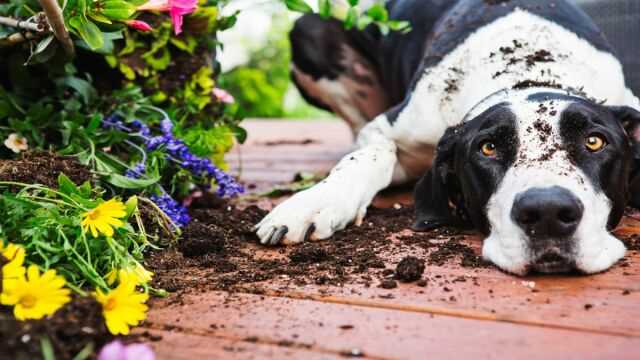Tulips, ivy & co: danger for dogs
Some plants are poisonous to pets. In the worst case, the consumption of these can cost the life of the beloved four-legged friend. What many people don’t know is that flower bulbs in particular that are planted in spring are poisonous to dogs. Onions lying around can attract dogs to play. There is a high risk of swallowing a piece or the entire onion. Therefore, onion plants should be stored safely before planting. When gardening, you should also make sure that you plant the bulbs deep enough in the ground so that the dog cannot easily find them by digging.
In addition, it is best to keep your dog under observation not only when you go for a walk, but also in the garden. Intervene immediately if you notice that the dog is paying particular attention to the plant. Here is a list of plants that can pose a risk to dogs.
Toxic Spring Plants And Bulb Plants For Dogs:
- tulips
- daffodils
- lily of the valley
- violet
- wood anemone
Other poisonous garden plants for dogs include:
- agave
- Wisteria
- chrysanthemum
- ivy
- geranium
- laburnum
- hydrangea
- cherry laurel
- lilies
- oleander
- passion flower
- rhododendron
Note: Creating a complete list of which plants are poisonous to dogs is difficult given the multitude of poisonous plants that exist. The list only shows a selection of poisonous plants that are widespread.
These home remedies can help
If your animal has eaten the poisonous plant, you should see a veterinarian as soon as possible – even if the animals are still symptom-free. The veterinarian can give the dog a drug that will induce vomiting to get rid of the poison as quickly as possible. Under no circumstances should you try to make the dog vomit on your own. Because the process should be observed by the veterinarian to rule out that a foreign body is behind the symptoms.
How to provide first aid:
Going to the vet is essential, but you can still do something to help the animal immediately: the dog can immediately after ingesting the poison Activated Charcoal Tablets (see Amazon) are given. This is a medicinal charcoal that is obtained from plants, such as coconut shells.
In the event of poisoning, activated charcoal binds the toxic substance in the digestive tract, thereby reducing the amount and rendering it harmless. The following applies: the faster the poison is bound to the activated carbon, the better. The charcoal is later excreted with the bound toxins in the faeces.
Activated charcoal can also be helpful at a later point in time. Then the preparation should be administered every eight hours at a maximum dosage of four grams per kilogram of body weight. For the exact dosage, it is best to ask your veterinarian.
In the following table you can see two activated carbon products as an example – one in capsule form, one as a powder.
